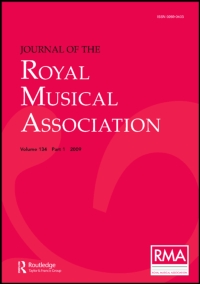No CrossRef data available.
Article contents
The Music of the Pentateuch
“Analytical Theory of Biblical Cantillations.”
Published online by Cambridge University Press: 01 January 2020
Extract
The Bible is not only a monument of religious thought, not only poetical creation, but also a great musical heritage. In common with many other sacred books of the ancient races, it is chanted in a specific recitative, usually termed “cantillation.”
- Type
- Research Article
- Information
- Copyright
- Copyright © Royal Musical Association, 1933
Footnotes
Copyright in U.S.A., 1934, by the Musical Association.
References
∗ Here we see, besides Assimilation of rhythm, Assimilation of interval: G instead of C in the up-beat of Segol.Google Scholar
∗ Assimilation of interval: A, instead of G, of the up-beat of Revià.Google Scholar
1 It was not superseded by Latin until the third century.Google Scholar
2 There seem to have been four different ways of chanting the Psalter in the first four centuries of Christianity: 1. Cantus tractus, when sung by a single voice; 2. Cantus directaneus, when sung ‘full’ by the whole body of singers; 3. the Responsorial, when sung by one voice, responded to by the people with an unvarying refrain; and 4. the Antiphonal, when sung probably in alternation between two bodies of singers.— s.r.s.Google Scholar


